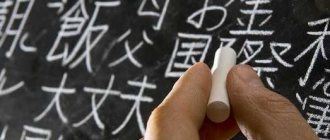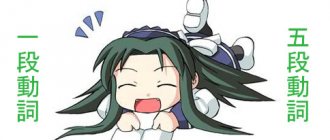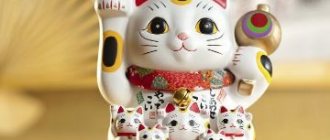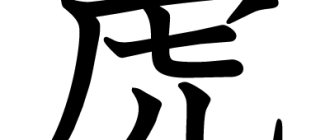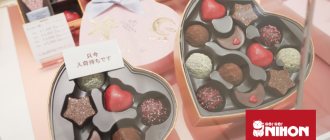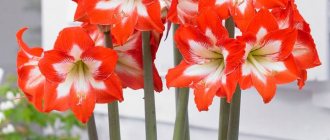Japanese character for “love”
愛(ai). Perhaps one of the most popular hieroglyphs, especially among married couples. Helps attract true feelings. Not to be confused with 恋 (koi). In the first case, we mean love not only for the opposite sex, but also for nature, life, and art. In the second case - romantic love for a specific person, even to some extent manifested in the desire to possess.
The order of strokes of the character 愛:
Double Happiness
The Chinese symbol for happiness, 幸福, consists of two characters that can be used separately but still mean the same thing. Thus, the meaning of the character 幸 (xìng) is happy, prosperous, while the character 福 (fú) means happiness and prosperity.
Of particular interest is also the symbol 喜 (xǐ), which is translated into Russian as “joy”, “fun”. The double outline of the joyful sign turns into the hieroglyph “double happiness” - a symbol that gives harmony in marriage and the fulfillment of all desires associated with a prosperous marriage.
Japanese character for “health”
健康 (kenkou). It is the combination of two kanji that forms the word “health”. It is believed that the image of this hieroglyph helps to improve the well-being of its owner. Sometimes you can simply find the character 健, but separately it means “healthy.”
What else can you do with hieroglyphs?
In addition to tattoos, Feng Shui and talismans, Japanese characters can be used in the following cases:
Use your favorite hieroglyph when creating a hand-made postcard. This will be a memorable gift with which you will express your feelings or wishes in an unusual way. The postcard will be especially valuable for those who are interested in martial arts.
In addition to the postcard, a mug with a hieroglyph would be a great gift idea
Writing on a T-shirt is much less risky than getting a tattoo. Moreover, it is much more pleasant to wear a T-shirt with an inscription, the meaning of which is close to your spirit, than to try with difficulty to find a thing with an inscription on which would suit you.
Japanese-style interiors are very popular these days. Well, what is Japanese style without a hieroglyph? If you want to contemplate a Japanese symbol on the wall of your room, you can watch a video with calligraphy lessons and create a real masterpiece on beautiful paper or a bamboo napkin. Another option is to make a custom photo wallpaper or poster.
For those who are fond of needlework (embroidery, beads, etc.), creating a pattern on a pillow or panel will be akin to calligraphy. The main thing is to choose a beautiful layout.
If you are invited to a Japanese-themed party (or even a simple party), bring candy, but not plain candy. Wrap each candy with a wish in the form of a hieroglyph to the person who will receive this candy.
Roof
Then comes the roof. What it has to do with love attraction may not be clear to a European. But the housing problem, which greatly spoiled the Muscovites, as one of Bulgakov’s characters put it, apparently caused damage to the Chinese people even in those ancient times when their written language was being formed. One can, of course, understand this radical not so literally, but in a figurative sense. The second in order, and perhaps in importance, line that makes up the Chinese character for “love” most likely denotes a connection with the place where the feeling settled. Namely in the heart.
Phrases in Japanese
Do you know how to say “hello!” in Japanese? No? Then this article will be useful to you. Every language has a set of basic phrases that are used every day. Say hello, as we have already indicated, thank you, apologize. Naturally, such phrases also exist in Japanese. It is simply necessary to know them - without them, everyday life will become impossible, and further study of the Japanese language will stall. Below in the tables we post a list of basic phrases in Japanese with transcription and translation. Get ready to memorize!
Heart
For all peoples, this organ is the home and receptacle of tender and, on the contrary, cruel emotions. Both love and hatred live in him, grow and die. Why do people all over the world think this? Probably because a rapid heartbeat is the most clearly felt sign of excitement. And the symbol of this blood pump is indicated by two lines intersecting at an angle.
Another similar inclined cross, but with a short segment added to the top of the stick, going from right to left and up, means something completely incomprehensible to a person who thinks in a European way. This radical symbolizes a slow-moving creature with many legs. But you can find logic in this figure, just remember the love languor that deprives you of strength. My head is spinning, my legs are tangled...
In general, if you combine all four components, it turns out that the hieroglyph “love” contains the following information: “a feeling has settled under the roof of the heart, which has sunk its claws, disturbing the peace so much that you want to go somewhere, but you don’t have the strength.”
Acquaintance
When interlocutors first get to know each other, they usually first talk about themselves and express hope for mutual support. In Japanese this is called 自己紹介 - "jikosho kai", which can literally be translated as "self-presentation". A sort of self-presentation. an established pattern in Japanese society .
It should be noted that the Japanese language has several levels of politeness . Here, with the exception of some points, phrases of two levels will be presented. Polite/Formal - Suitable for all occasions. It is universal , at least in the initial stages. Informal is the level of politeness of speech among friends, close colleagues, and the like. Be careful in choosing your phrase - the wrong level of politeness will alienate a person or even offend him.
A small note: in transcription, the colon after a vowel indicates its length.
So, the first phrase in your story about yourself is 初めまして (はじめまして). It reads “hajimemashite” and translates as “nice to meet you.”
Then you say your name. Here are several options:
| Phrase in Japanese | Writing in Hiragana | Transcription | Translation |
| (私は)nameです。 | (わたしは)nameです。 | (Watashi wa) name des. | I am the name. The simplest and not too formal option. “Watashi wa” can be added or omitted. |
| 私は name と言います。 | わたしは name といいます。 | Watashi wa name is iimas. | My name is my name. This is a more complicated option, but also more impressive, if I may say so. |
| 私は name と申します。 | わたくしは name ともうします。 | Watakushi wa name to mo:shimas. | My name is my name. A very official and formal option. Used where appropriate. It's better to save it for important events. |
After the greeting, you need to tell about yourself. The Japanese usually perceive people based on their belonging to a place - a place of study, a place of work. This is as important as your name. There is usually only one pattern here - type of activity. Here are a few examples:
| Phrase in Japanese | Writing in Hiragana | Transcription | Translation |
| 学生です。 | がくせいです。 | Gakusei des. | I am a student. Including school students. |
| 大学生です。 | だいがくせいです。 | Daigakusei des. | I am a university student. |
| 医者です。 | いしゃです。 | Isya des. | I am a doctor. |
| 技師です。 | ぎしです。 | Gisi des. | I am an engineer. |
| 教師です。 | きょうしです。 | Kyo:shi des. | I'm a teacher. |
Naturally, if you already know how, you can use the genitive suffix の to add the name of the school or university where you study, or the company or institution where you work.
The “self-introduction” ends with a template phrase in which the speaker expresses the hope that the acquaintance will be pleasant and strong. There are several options here too:
| Phrase in Japanese | Writing in Hiragana | Transcription | Translation |
| よろしくお願いします。 | よろしくおねがいします。 | Yoroshiku onegai shimas. | I hope for your goodwill! A fairly polite phrase suitable for any occasion. |
| よろしくお願いいたします。 | よろしくおねがいいたします。 | Yoroshiku onegai itashimas. | I hope for your goodwill! A very polite option for special occasions. |
| よろしく。 | よろしく。 | Yoroshiku. | Nice to meet. An informal option, suitable for friends. |
Let's see what happened in the end. This is the basic pattern for almost all cases , since it is polite enough:
Story
The modern Chinese alphabet has more than 50 thousand characters; no other writing system can boast of such a number of letters. They serve to convey meaning rather than phonetic meaning; by studying them, you understand more about the culture of the country and its people. Some scientists believe that Chinese writing arose 6 thousand years ago, but this hypothesis is not supported by facts.
Hieroglyphs consist of 24 strokes and 316 graphemes, have a long history, and continue to change. Ancient Chinese literates who could read and write did not strive to simplify the alphabet. On the contrary, they made a cult out of him, attributed magical abilities, and deified him. We can say that these pictures shaped the Chinese people's perception of the world around them. Folk art, traditions, love relationships were formed under the influence of original writing and language.
IMPORTANT: In the 60s of the 20th century, the government of the Celestial Empire, in order to increase the literacy of the population, simplified the hieroglyphs, reducing the number of features.
Greetings
Where would we be without the same “hello”? Any conversation begins with a greeting; the right phrase prepares the interlocutor for dialogue and attracts him to you.
| Phrase in Japanese | Writing in Hiragana | Transcription | Translation |
| こんにちは! | こんにちは! | Konnichiwa! | Hello! |
| おはようございます! | おはようございます! | Ohai: gozaimas! | Good morning! |
| おはよう! | おはよう! | Ohayo:! | Good morning! An informal option, for example, for friends. |
| こんばんは! | こんばんは! | Konbanwa! | Good evening! |
several etiquette phrases follow . The interlocutors show attention to each other’s affairs, thereby expressing participation.
For example, if you haven’t seen your friend for a long time, you can continue the conversation with the phrase お久しぶりです。(おひさしぶりです。) - “ohisashiburi des”, “long time no see”.
Then it is customary to inquire about how things are going with the interlocutor:
| Phrase in Japanese | Writing in Hiragana | Transcription | Translation |
| お元気ですか。 | おげんきですか。 | O genki des ka? | How are you? |
| はい、元気です。 | はい、げんきです。 | Hai, genki des. | OK, thank you. Neutral option. |
| お陰様で、元気です。 | おかげさまで、げんきです。 | O kage sama de, genki des. | OK, thank you. A more polite, but still neutral option. |
Do not forget that you, in turn, should also ask the interlocutor about his affairs, if the question was asked to you.
Then the dialogue runs its course, and you can conduct the conversation at your own discretion.
What does the "fu" sign look like?
More interesting in this regard is the hieroglyph 福 (fú), which is a universal symbol, reuniting all the components of happiness: joy, pleasure, pleasure. The sign consists of two parts: left and right. The first means the altar to which people go for God's blessing, the second part in turn is divided into three more parts: the roof, the mouth, the field, being a reflection of abundance and prosperity.
The schematic representation of the roof means a house, the mouth means the person living in this house, the field is regarded as the source of food for the family. Thus, the hieroglyph “happiness” in ancient times meant God’s and heaven’s blessing. By honoring the gods and observing the laws established by heaven, a person deserves the right to housing and food. What else does a person need to be happy?
Gratitude
Gratitude is the key to the heart of a person in any culture, so the ability to thank is no less important than the ability to introduce yourself and greet the interlocutor. Here are a few ways you can express gratitude and also respond to it:
| Phrase in Japanese | Writing in Hiragana | Transcription | Translation |
| ありがとう! | ありがとう! | Arigato:! | Thank you! Informal and simplest option. |
| どうもありがとう! | どうもありがとう! | Do:mo arigato:! | Thank you very much! Still informal. |
| ありがとうございます! | ありがとうございます! | Arigato: gozaimas! | Thank you Polite option. |
| ありがとうございました! | ありがとうございました! | Arigato: gozaimashita! | Thank you Formal gratitude for what was done for you in the past , gratitude for the result . |
| どうもありがとうございます! | どうもありがとうございます! | Do: mo arigato: gozaimas! | Please accept my gratitude! The polite equivalent of the informal "thank you very much." |
| どうもありがとうございました! | どうもありがとうございました! | Do: mo arigato: gozaimashita! | Please accept my gratitude! A polite "thank you very much" for an action in the past . |
| いいえ。 | いいえ。 | I:uh. | My pleasure. An informal response to gratitude for friends. |
| こちらこそ。 | こちらこそ。 | Kotira askew. | No, thank you. If there is a reason, of course. |
| どういたしまして。 | どういたしまして。 | Do:itashimasite. | Do not mention it. The polite equivalent of "You're welcome." |
Placement of the symbol of happiness
As mentioned above, there are two symbols for happiness in Chinese: “happiness” and “double happiness.” The hieroglyph “happiness” (photo below) is intended to evoke God’s blessing only for one person. The action of the sign is individual and local, that is, happiness is granted only in the desired area, and not in all at once. Therefore, having decided where exactly you want to achieve success and prosperity, draw a sign in the place that will help you find happiness.
And in order to live in abundance, draw a hieroglyph on the south-eastern side of the house and regularly mentally address it with a request to attract success and good luck to you.
Apologies
Well, there are a lot of apologies in Japanese. It’s time to dedicate a separate article to them, so we suggest now considering only the most basic phrases intended for apologies.
| Phrase in Japanese | Writing in Hiragana | Transcription | Translation |
| すみません。 | すみません。 | Sumimasen. | I'm sorry. An analogue of the English “excuse me”. You haven't done anything wrong, you're just apologizing for the inconvenience. |
| ごめなさい。 | ごめなさい。 | Gomenasai. | Sorry. Similar to "sorry". This phrase asks for forgiveness for wrongdoings. |
You can read more about Japanese apologies here: How to apologize in Japanese? We apologize in Japanese.
Phrases at home
It would seem what phrases are at home. “My home is my castle,” says the famous English saying. However, even here there are everyday expressions that you may not even notice.
| Phrase in Japanese | Writing in Hiragana | Transcription | Translation |
| 行ってきます! | いってきます! | Ittekimas! | I left! A phrase you say when leaving the house. |
| いってらっしゃい! | いってらっしゃい! | Itterassy! | Come back! The answer to the phrase above. |
| 只今! | ただいま! | Tadaima! | Hello, here I am! When you return home. |
| お帰りなさい! | おかえりなさい! | Okaeri nasai! | Welcome back! The answer to the phrase above. |
| いただきます! | いただきます! | Itadakimas! | Bon appetit! Not only at home, but anywhere. |
The meaning of double happiness
Unlike the “happiness” hieroglyph, the power of the “double happiness” symbol is more powerful and effective. He is able to fulfill all the desires and undertakings of not only one person, but also a group of people united by one desire. To attract success in business and creativity, place the hieroglyph in the north of the room, and the result will not be long in coming. The image of double happiness in the southwest helps to strengthen friendship, acquire new friends and like-minded people. The symbol helps to conceive a child if you energize the bed, replenish your wallet if you put the hieroglyph “happiness” in it, attract new opportunities and implement ideas. The image of double happiness can be presented as a gift to relatives and friends. It is important to give it with sincere and pure intentions.
Phrases away
If you need to receive guests at your place or visit another person’s house, then, naturally, you also cannot do without etiquette phrases. for the Japanese to come to visit empty-handed , so phrases appropriate to the occasion are also included in the table.
| Phrase in Japanese | Writing in Hiragana | Transcription | Translation |
| いらっしゃい。 | いらっしゃい。 | Irassyay. | Welcome! |
| どうぞお入り下さい。 | どうぞおはいりください。 | Do:zo ohairi kudasai. | Please come in. |
| どうぞお上がり下さい。 | どうぞおあがりください。 | Do:zo oagari kudasai. | Please come in. The phrase is exclusively for traditional Japanese houses. This is due to the peculiarity of their design - there is a small threshold at the entrance, so you do not “enter” (“hairu”) into the house, but “climb” (“agaru”). |
| お邪魔します。 | おじゃまします。 | Ojama simas. | Sorry for the inconvenience! This phrase is usually said when you enter another person's house. |
| つまらないものですが。 | つまらないものですが。 | Tsumaranai mono des ga. | It's a small thing, but still. This phrase is used when giving a gift. |
| Home page | ?????? | O kuti ni au ka wakarimasen ga, do: zo o mesiagari kudasai. | I don't know if you'll like it, but please help yourself. This phrase can be said when we give something edible. |
| どうぞおかけ下さい。 | どうぞおかけください。 | Do:zo okake kudasai. | Please have a seat. |
| Food/drinkはいかがですか。 | Food/drinkはいかがですか。 | Food/drink wa ikaga des ka. | Would you like some food/drink? |
| どうぞお召し上がり下さい。 | どうぞおめしあがりください。 | Do:zo o masiagari kudasai. | Please help yourself. |
| ご馳走様でした。 | ごちそうさまでした。 | Gochiso: deshita sama. | Thanks for the treat! You were offered a treat, you ate it, and then this phrase follows. |
| すみません。 | すみません。 | Sumimasen. | Thank you. A way to express gratitude to an offer (enter, sit down, etc.). This was already in the “apology”, but the Japanese often say thanks when apologizing for trouble , remember this. |
| 失礼します。 | しつれいします。 | Shitsurei shimas. | Sorry. Another, more polite way to express gratitude for an offer (enter, sit down, etc.). |
Tattoo culture
Today the hieroglyph for wealth is especially popular. Millions of people constantly strive to be in the field of action of the magic of this symbol. In order for the miraculous sign to fulfill its main purpose both day and night, fans of this art tattoo unusual foreign letters on their bodies.
Europeans started this fashion, but you can increasingly meet people with hieroglyphs on their skin in the post-Soviet space. The main advantage of such tattoos is mystery and originality. In this case, you can be sure: the likelihood that such a pattern will be on the body of a friend is very low. In addition, only the owner knows exactly the meaning of the symbol. Everyone else can only guess about the essence of the sign.
The hieroglyph that brings wealth has enormous power, which not every ordinary person can understand. But those who believe in the magic of the symbol will definitely receive inspiration in order to achieve their plans.
